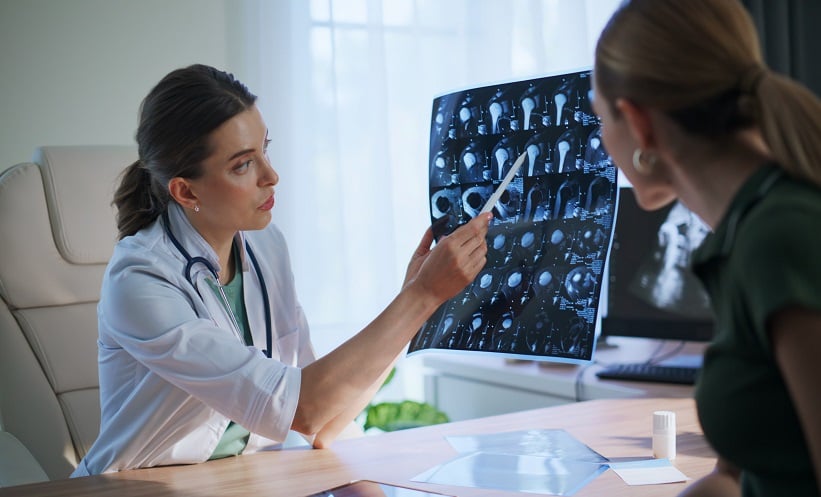Author: Darcy Richards, EMJ, London, UK
Citation: EMJ Innov. 2024;8[1]:15-17. DOI/10.33590/emjinnov/11000005. https://doi.org/10.33590/emjinnov/11000005.
![]()
INTRODUCTION
Amidst escalating concerns surrounding climate change and its impact on health, this timely session explored how, conversely, healthcare also has a detrimental impact on the climate, perpetuating the problem.
Jonathan Groome, Nuffield Health and Barts Health NHS Trust, both in London, UK, opened the session by painting the bleak picture of the impact of climate change on the planet, and on our health. Record ocean temperatures; the loss of 1.7 million lives of children <5 years of age; an increase in heat-related mortality in those >65 years of age; increasing food insecurity; loss of work hours; unsafe levels of carbon dioxide (419 parts per million [ppm] as of December 2023, which is 69 ppm greater than the safe level of 350 ppm); and resource limitation, resulting in conditions that spark the rise of conflict, were some of the poignant realities related to climate change that were highlighted. Groome explained that these climate change consequences will ultimately exacerbate pre-existing healthcare inequalities.
In addition to the impact of climate on health, Groome emphasised how polluting the healthcare industry is producing 4–5% of global emissions. He discussed how climate change will have health or economic impacts for everyone, and that whilst we can still do something to effect change, the actions required to make significant differences must be implemented urgently. In fact, the threat climate change now poses is not to the planet, but to our survival within it. Groome poignantly remarked that as true healthcare professionals, knowing the impacts of the interplay between climate and healthcare, there is a duty of care towards the planet, as well as to patients.
The session also explored how the NHS is looking to achieve their ambitious commitment of reaching net zero by 2040 for directly controlled emissions, and 2045 for indirect emissions that can be influenced. Whilst the target for this is earlier than the UK government’s target of 2050, Sarah Ouanhnon, Greener NHS Programme, NHS England, London, UK, stated that this target is realistic.
TACKLING THE PROBLEM
The NHS was the first healthcare system to declare a climate emergency and a net zero target; however, the route to achieving net zero in a service as vast and complex as the NHS will not be easy. To tackle emissions, the Greener NHS strategy, as presented by Ouanhnon, is looking at every individual hospital function to identify what and where changes can be made.
Energy and Hospital Estates
In terms of energy efficiency, the strategy considers hospital estates and facilities to determine how to increase the energy efficiency of buildings. Ouanhnon highlighted the use of solar panels for energy provision, and developing new standards for what net zero buildings will look like for future hospitals, as examples of tackling energy efficiency.
Emissions Related to Medicines
Discussing the impact of medicines on healthcare-related emissions, Ouanhnon spotlighted inhalers and anaesthetic/medical gases as two groups of medicines representing 5% of all NHS emissions. Compared to other types of inhalers, dry powder inhalers not only have a lower carbon footprint, but are also clinically safe, and appropriate for most patients. Therefore, offering patients dry powder inhalers as alternatives could lead to emission reduction.
When considering anaesthetic gas emissions, Ouanhnon highlighted a review which revealed that of the three most commonly used in practice, desflurane had a much higher emission profile than sevoflurane. Moreover, in most cases, sevoflurane was found to be as effective and as appropriate as desflurane. These findings led to a change in practice, and subsequently, a large decrease in anaesthetic gas-related emissions over the last 4–5 years. Following this review, the NHS committed to stop using desflurane by early 2024. Ouanhnon commented that this is the first time a healthcare system has ceased the use of a drug for environmental reasons. The above are examples of how reviewing day-to-day processes in healthcare can result in a significant change towards achieving a more environmentally friendly service, without compromising patient safety or quality of care.
The Role of Supply Chains
One of the major contributors to NHS emissions is the supply chain for goods and services. Groome noted that approximately 60% of healthcare emissions come from global supply chains, which provides a huge opportunity to impact emission reduction. In light of this, the NHS has set a roadmap to engage suppliers to reduce their carbon footprint. By 2027, the NHS will no longer do business with suppliers who do not have a net zero target, and since April 2023, the NHS have required that carbon reduction plans must be in place for suppliers of contracts over 5 million GBP.
Models of Low Carbon Care and Indirect Emissions
In addition to direct emissions within hospitals, emissions that occur around them must also be considered, such as how the workforce commutes, and how patients travel to attend outpatient appointments. Solutions to tackling this could be engaging staff in methods of active travel, and considering where virtual outpatient appointments could be appropriate for patients.
Luke O’Shea, University College London Hospital (UCLH), NHS Foundation Trust, London, UK, explored a shift toward low carbon care models, and tackling areas of waste that carry fixed carbon and financial costs within the service, such as unfilled theatre lists and unattended appointments. When reflecting upon low carbon care, O’Shea referred to virtual care pathways. He noted that UCLH conducts >400,000 virtual appointments per year, discussing that whilst they work well and reduce emissions, there are additional factors to consider, such as implementing appropriate video technology, and creating new patient communication documents, to improve the quality of virtual outpatient appointments.
Spirited by the exponential rise in key technology areas, there is hope that by 2030, the challenges that seem niche or difficult to overcome now will have solutions. Imploring the audience, O’Shea stated: “The more that we do now, the bigger the impact we have longer term.” Referring to a famous Nelson Mandela quote, he added: “It always seems impossible until it’s done,” concluding that this is also true of achieving net zero within the NHS.
CONCLUSION
Whilst the outlook for climate change and the impact on health is startling, this session highlighted there is hope that significant change in reducing healthcare-related emissions can be made. The strategies the NHS is taking in its aim for a net zero health service by 2040 inspire a belief that greener healthcare is achievable, but funding and government intervention will be required.







